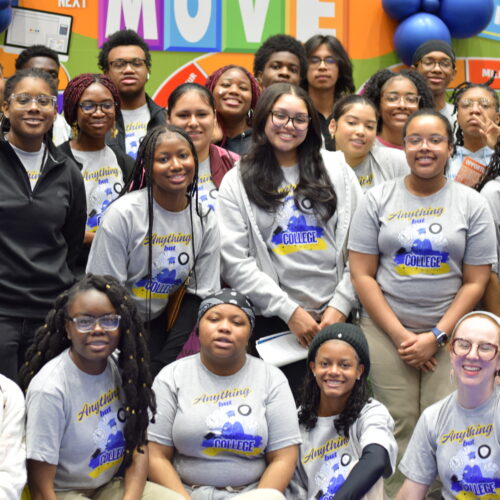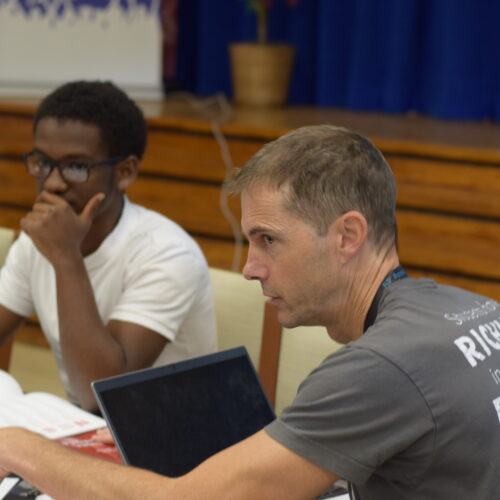There once was a mountain with a north side and a south side. The peak of the mountain, which was seen in its distance equally well from both sides, afforded views of the whole world and from its summit, if one cared or dared to look, one could easily see all of the mountain’s slopes, its trails and its gorges, its necklace of waterfalls on the north side and its deep forests and lush valleys on the south side. The climb to the summit was steep from both the north and the south sides, but once ascended, the air was crisp, the skies blue and framed by a flotilla of purple-tinged clouds. There were cool plateaus sprinkled with hoarfrost in the morning where one could camp in repose and gaze and ponder and dream and wonder.
The two-sided mountain hosted several micro- climates. The south side received the most sunshine; as far as its denizens could tell, it had always been that way and probably would never change. The south side was warm, but not hot, with just enough rain to stay plush and though sometimes there were cloudbursts in the middle of the day, more often than not it rained at night, when everyone slept. After centuries of such clement conditions, the people who lived on the south side, those who had enjoyed generations of such nurturing exposure, had been able to pave clearly marked, well-maintained paths to the peak of the mountain. There were cable-drawn gondolas for hire that could take one to the summit quickly.
Nearly everyone who lived on the south side had engaged in an annual ritual climb to the summit where they camped and studied and played for a time before descending back down. Indeed, to truly be considered a south sider one had to engage in this ritual (though there were a few notable exceptions who had begun the ritual and then found a short-cut). Every year, beginning at the end of the summer and into the fall and through to the early spring, south side families would send their 17 and 18-year-old sons and daughters on a trek up the mountain to the summit. Some of the teens would trod on the well-marked trails of packed earth, gravel and asphalt. Some hired expert guides to show them the best way up. These guides had compasses and high voltage lamps and flashlights and carabiners and thick rope and tents and vacuum-packed provisions, because even the best of the south side trails could be circuitous and sometimes lonely and confusing. A few lucky ones rode the gondola all the way to the top. All of the annual trekkers had friends and families cheering them along the way.
Most of the south side children made it to the summit every year and then hiked back down. When they started the hike back down, their families and friends again lined the pathways, cheering and toasting and throwing confetti and gifts in the air. Either at the peak or on the hike back down, these young people, now officially south side adults, met others who had made the same journey and spent time at the summit surveying the universe of possibility. They would pair off and eventually mate and 18 years later their progeny would commence the very same trek up the trails and roads and some even on the gondolas, up to the top of the two-sided mountain.
The north side of the mountain was also populated. The weather was harsher there. It was mostly cloudy, windy and cold on the north side. There were frequent blizzards and the snow cover never seemed to completely melt. When the temperatures did moderate, landslides crashed into the north side towns. Though the lovely peak of the two-sided mountain could be glimpsed from the north side, due to the extreme conditions on the ground and the lack of southern exposure, generations of north siders were not able to cut coherent paths to the peak though they yearned to have their children climb there. There were no cable-drawn gondolas. The north side topography was marked by thick brambles and thorny thickets and dense forests and layers of hedgerows and winding valleys. Closer to the summit, just shy of the peak, jagged rocks and steep cliffs, so unlike the gentle approaches on the south side, made the final ascent precarious. Few people who lived on the north side had actually been to the summit. Those who did looked down on the south side and, seeing its green hills and rolling valleys and manicured paths, decided to traverse down that southern slope just to see what it was like. They inevitably met fellow hikers on one of the south side paths, fell in love and made their homes in pleasant south side villages. For these north siders, to go back down to the north side seemed as arduous as the trek back up; staying on the south side made more sense and eventually took on a sense of inevitability. The north siders who made it to the summit tended to have hiked alone, and they basked in the company of the others who had made it to the peak. They would never have wished such a long, lonely journey on their children so they ensured that their offspring would be able to climb the well-marked paths and maybe even ride the gondola when their time came.
“The north side topography is marked by thick brambles and thorny thickets and dense forests and layers of hedgerows and jagged valleys.”
Despite the harsh conditions of the north side, probably in fact because of them, north side children were gritty, resilient, stoic and skilled in ways that south siders could never be.They all aspired to climb. Some of the north siders who made it close to the top never surmounted it because they were called back down to help their families through another blizzard or landslide. Some had enough provisions to make it nearly to the peak but the sheer cliffs that cupped the peak like the bezel of a diamond ring exhausted them and drove them back down.
There were some south side children who had made it to the peak and used its vantage point to gain a clear view of the north side. They saw the north side children thwarted by the weather conditions and lack of clear-cut pathways who were nevertheless trying to make the same journey they themselves had just completed. Some of these south siders were shocked at the lack of gondolas or even hiking trails on the north side. In their growing awareness of the reality of the two-sided mountain, they dreamed of a one-sided mountain. They trekked down the north side to help whomever they could touch to reach the peak. Individually and in small teams, they guided north side children up to the summit. These children of the south side sang the benefits of scaling the peak, but none of them could discover a scalable solution so that all north side children could make the annual hike like their south side peers. Despite the lack of a coherent system, they tried to achieve what they could. Some recruited small groups of north side children and led them up to the mountaintop. Some installed south side summiteers in north side towns to individually lead north siders hand by hand. Some bushwhacked new north side paths. But all of their efforts did not make a dent in the imbalance between south side summiteers and north side ones. And though there were some small triumphs, recognized more clearly after sophisticated statistical calculations were applied, most of the intrepid expeditions ended in disappointment. Their bushwhacked trails grew over with knotty roots; boulders set loose from the thaws in the weather blocked access points, and the south side teams became exhausted by the yearly expeditions that turned out to be extremely expensive. Their south side funders grew weary of the annual solicitations for donations and subsidies. A few south side-led expeditions tried to build the capacity of some north siders to lead their own teams to the peak. Sometimes that worked but there were still too few of these teams and the conditions on the north side would not let up and always derailed the efforts to build a system of climbing skills and support and manicured trails.
The south side community was not without knowledge of and compassion for the conditions on the north side. Seeking an inexpensive and systemic solution to the issues of the north side, the leader of the mountain, himself a quick climber to the summit, decreed one day that all north side children must make it to the summit within one year and that those south side expeditions with the best ideas of how to get the get the most north side children to the top would be funded. They would have to relentlessly measure and publicize their successes and failures. The leader thought that short-term incentives and swift accountability would fix the inequality between the south and north sides. So despite centuries of trail neglect and harsh weather conditions, several south side teams sent expeditions down the north side to quickly haul as many kids to the top as possible. Some built make-shift roads and some even tried to construct those coveted gondolas, some tried to train all of the adults on the north side as guides and some simply carried as many children as they could on their shoulders. There were a few successful expeditions but as they raced to the top of the mountain, the south side community built even better roads and trails for their own children and installed hydraulic lifts on their gondolas to make them faster and smoother. By the end of the year, more south side children had made it to the peak in record time..
Meanwhile, the north side expeditions had failed to close the gap between south side summiteers and north side ones. In fact, the gap had widened. There were some more paths on the north side, but the number of expert guides had diminished and the paths quickly became overgrown due to lack of sustainable pruning. The south side expedition leaders were, per design, exposed for their failure to measure up. With dwindling provisions and starved for encouragement, with declining spirits and morale, they packed up their tents and bedrolls and snowshoes and headed back to their south side homes. And the two-sided mountain remained the same.
One day, though, the north side children realized that they did not need south side expeditions. They realized that they had the power to launch themselves and their friends to the summit and waves upon waves of them began to slog through the north side thickets and brambles, the trek made easier by the sheer number of them supporting each other. And once they reached the summit, these north side children peered over to the south side before making their way back down the north side again, raking and smoothing the paths for the next set of climbers as they descended.
Link:
http://www.trafficeast.com/#!74-104-1/zoom/id07s/dataItem-ii9cx71e1
Keith Frome, PeerForward CEO











